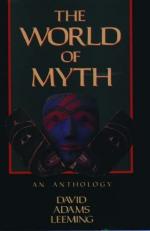
|
Part I: Chapters 1-5
1. How does Leeming define cosmic myth?
(a) Myths that define the constellations.
(b) Myths that define the order of the world.
(c) Myths that define the history of the earth.
(d) Myths that explain the location of different stars.
2. How does Leeming define cosmology?
(a) The study of the history of the heavens.
(b) The study of beauty aids.
(c) The study of the structure of the universe.
(d) The scientific study of the universal order.
3. Which topic does not fall under cosmology?
(a) The Great Flood.
(b) Revelation.
(c) The meaning of life.
(d) Creation
4. What does Leeming say is consistent from one set of myths to another?
(a) Universal human concerns.
(b) Heroes and heroines.
(c) Monsters and angels.
(d) Transcendent truths.
5. What is cosmogony?
(a) Myth of creation.
(b) Myth of the end of time.
(c) Myth of beautification.
(d) Myth of the beginning of humanity.
6. From what language does the term "Cosmogony" derive?
(a) Gaelic.
(b) Greek.
(c) Egyptian.
(d) Urdu.
7. Which narrative is not an aspect of cosmogony?
(a) The fall from the state of perfection or grace.
(b) How the universe was developed.
(c) Explanation of natural phenomena.
(d) The creation of humankind.
(read all 180 Multiple Choice Questions and Answers)
|
This section contains 4,900 words (approx. 17 pages at 300 words per page) |

|




